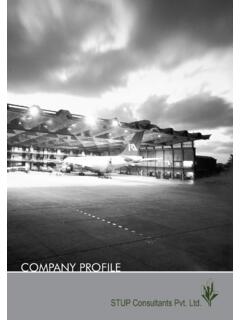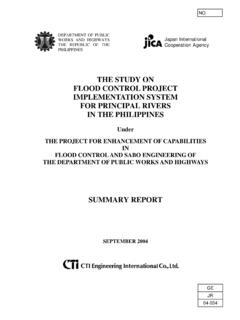Transcription of AQA GCSE Case Study Revision Booklet Paper 1
1 AQA GCSE Case Study Revision Booklet Paper 1 Windsor Girls School Geography Department Paper 1: Living with the physical environment Paper 2: Challenges in the human environment Natural hazards - Tectonic hazards - Weather hazards - Climate change Urban issues and challenges The living world - Ecosystems - Tropical rainforests - Cold Environments (DO NOT choose Hot deserts) The changing economic world Physical landscapes in the UK - UK physical landscapes - coastal landscapes - River landscapes (DO NOT choose Glaciers) The challenge of resource management - resource management - Water (DO NOT choose Energy or Food) GCSE Geography Case Studies and Key Examples by Topic Living with the Physical Environment ( Paper 1 Physical) Challenges in the Human Environment ( Paper 2 Human) The Challenge of Natural Hazards Natural Hazards Tectonic Hazards Weather Hazards Climate Change Urban Challenges The global pattern of urban change Urban Growth in Rio Urban challenges in the UK Sustainable development of urban areas Natural Hazards/Tectonic Hazards Nepal (2015)
2 - Earthquake in LIC (Hodder pp. 14-15) L Aquila (2009) Earthquake in HIC (Hodder pp. 12-13) Weather Hazards Typhoon Haiyan (2013) (Hodder pp. 32-33) Somerset Levels Climate Change No case studies needed. London (regeneration, Shoreditch, Crossrail) (Hodder pp. 218-229) o London Urban Greening (Hodder pp. 230-231) Urban inequalities, environmental problems, impact of urban sprawl (Hodder pp. 232-237) o London Urban Regeneration: The Olympic Plan (Hodder pp. 238-241) Rio de Janeiro (social challenges, economic challenges, improving Rio s environment) (Oxford pp. 152-159) o Rochinha, Brazil (Self-Help; solutions) (Oxford pp. 160-161) o Favela Bairro Project (Oxford pp. 162-163) Urban Sustainability BedZed Sustainable Homes London Sustainable Transport ( congestion charging, Santander bikes, super highways) The Living World Ecosystems Tropical Rainforests Option chosen - Cold Environments The Changing Economic World Economic development and quality of life Reducing the global development gap Economic development in Nigeria Economic change in the UK Tropical rainforests Epping forest ecosystem, UK (Hodder pp.)
3 60-61) Changes affecting ecosystem balance Yellowstone National Park, Grey Wolf (Hodder pp. 62 63) Malaysian Rainforest (deforestation has economic and environmental impacts, causes of deforestation, subsistence and commercial farming, logging etc; impacts of deforestation, economic development, loss of biodiversity etc) management of tropical rainforests (protection, governments, conservation groups etc). Sustainable management . (Hodder pp. 78-81) CITES, National Parks (conservation) Cold Environments Svalbard (opportunities and challenges for development) (Oxford pp. 80 83) Managing cold environments (The use of technology, Action by governments, International agreements, Conservation groups) (Oxford pp. 86 87) Reducing the global development gap Tourism in Jamaica Economic development in Nigeria Nigeria (experiencing rapid economic development leads to significant social, environmental and cultural change) (Hodder pp 268 281) Economic change in the UK Southampton: science park Making industry more sustainable (Hodder pp 298-299) Torr Quarry, Somerset Physical Landscapes in the UK The physical diversity of the UK coastal landscapes Option chosen River landscapes Challenge of resource management Global resource management Resources in the UK Option chosen Water coastal Landscapes Geology and rock structure on the Dorset coast (Hodder pp.
4 124-125) coastal realignment in Medmerry (Hodder pp. 146-147; Oxford pp. 110) OR you can choose to revise coastal management at Lyme Regis (Oxford pp. 112-113) River landscapes River Tees (source to mouth, key landform features) (Oxford pp. 122-123) Jubilee River Flood-relief channel (Hodder pp. 176-177) Water Large scale water transfer scheme Lesotho. Local scheme in an LIC (sustainable supplies of water) Hitosa, Ethiopia. (Hodder pp. 354-355) Key General Knowledge and Advice For all your units you should know: The key geographical terminology Case studies Facts and figures to back up points especially in the case Study section The names of all the continents The difference between developing countries and developed countries Examples of developed and developing countries Understand exam language . For example costs and benefits is just another way of saying negatives and positives or advantages and disadvantages Tips for your exam Use PEEL (State your point, Explain it, back it up with evidence (this could be from the resource Paper , an example and fact and figures, Link back to the original question (have you actually answered the questions).)
5 Answer/attempt all questions you are supposed to answer Read the question twice Underline the key words in the question you could BUG your answer (box the command word, underline the key word, glance back over your answer) Make sure you can describe, explain, contrast Keep an eye on your timing there are more marks at the end of sections. It s a mark a minute! Don t spend long on 1 or 2 mark questions (a sentence or even just a word is probably enough) Refer to examples when you know them and back up with facts and figures Know your case studies in detail Use key terms in your answers write in geographical language intercept rather than soaks Link back to the question Develop your points for further marks (make connections) Keep your answers focused on the question if you have been asked about earthquake responses don t waste time including the impacts Be specific generalisation is the enemy of us all!
6 Paper 1: Living with the physical environment Natural Hazards Tectonic hazards Use named examples to show how the effects and responses to a tectonic hazard vary between two areas of contrasting levels of wealth. Case Study : HIC: L Aquila, Italy (2009) & LIC: Gorkha, Nepal (2015) L Aquila, Italy HIC Gorkha, Nepal LIC Primary Effects - 308 killed - 1,500 injured - 67,500 homeless - San Salvatore Hospital severely damaged so could not cope with injured victims - US$ cost of damage Secondary Effects - Aftershocks triggered landslides and rockfalls causing damage to housing and transport - Landslide and mudflow caused by burst main water pipeline in Paganio - Number of students at L Aquila university has decreased since the earthquake Primary Effects - 8,841 dead - 16,800 injured - 1 million homeless - Destruction of 26 hospitals and 50% of schools - A reduced supply of water, food and electricity Secondary Effects - An avalanche was triggered on Mount Everest which swept through Everest Base Camp killing 19 people - Tourism and employment shrunk in Nepal after the earthquake - Rice seed stored in homes was ruined causing food shortages and income loss Immediate Responses - Hotels provided shelter for 10,000 homeless people - 40,000 homeless given tents - Within one hour the Italian Red Cross was searching for survivors.
7 Helped by 7 dog units, 36 ambulances and a temporary hospital. - British Red Cross raised 171,000 in support - Mortgages and utility bills were suspended Secondary Responses - Residents did not have to pay tax in 2010 - Students were given free public transport and were exempt for university fees for 3 years. - Homes took several years to rebuild and historic centres expected to take years Immediate Responses - International help from the UK Disasters Emergency Committee (DEC) raised US$126 million - Temporary shelters were set up The Red Cross provided 225,000 people with tents - The United Nations (UN) and the World Health Organisation (WHO) gave out medical supplies to the worst-affected districts - Facebook launched a safety feature so people could indicate they were safe . Secondary Responses - Durbar Square heritage sites were reopened in June 2015 in time for tourist season - Mount Everest reopened for tourists in August 2015 and climbing permits bought in 2015 were made valid until 2017 to encourage climbers back - Office for the Coordination of Humanitarian Affairs (OCHA) reported that US$274million of aid had been committed to recovery efforts Exam Practice Suggest why the effects of a tectonic hazard vary between areas of contrasting levels of wealth.
8 [6 marks] Point: One in which the effects vary (give examples of primary and secondary effects, why are primary effects different in richer and poorer countries?) _____ _____ _____ _____ _____ _____ _____ _____ _____ _____ _____ _____ Point: One in which the effects vary (give examples of primary and secondary effects, why are primary effects different in richer and poorer countries?) _____ _____ _____ _____ _____ _____ _____ _____ _____ _____ _____ _____ To what extent does a country s ability to cope with a tectonic hazard depend on its wealth? Use examples from countries with contrasting wealth to support your answer. [9 + 3 SPaG marks] Introduction: Introduce your two examples of a natural hazard. _____ _____ _____ _____ Point: richer countries can cope better than poorer countries (compare an effect and response why was it less/better in the richer country?) _____ _____ _____ _____ _____ _____ _____ _____ _____ _____ _____ _____ Counterargument: richer countries cannot cope better than poorer countries.
9 Compare an effect and response why was it less/better in the poorer country?) _____ _____ _____ _____ _____ _____ _____ _____ _____ _____ _____ _____ Conclusion: Your overall opinion linking back to the exam question. _____ _____ _____ _____ _____ _____ Using two named examples, evaluate the effectiveness of the immediate and long-term responses to a tectonic hazard in two countries of contrasting wealth. [9 + 3 SPaG marks] Introduction: Introduce your two examples of a natural hazard. _____ _____ _____ _____ Point: Immediate and long-term responses were successful in a rich country. (what were they? How did they help to reduce the effects? What were the effects?) _____ _____ _____ _____ _____ _____ _____ _____ _____ _____ _____ _____ Counterargument: Immediate and long term responses were not as successful in a poor country. (what were they? How did/didn t they help to reduce the effects? What were the effects?) _____ _____ _____ _____ _____ _____ _____ _____ _____ _____ _____ _____ Conclusion: Your overall opinion linking back to the exam question.
10 _____ _____ _____ _____ _____ _____ Choose either an earthquake or a volcanic eruption. Assess the extent to which primary effects are more significant than secondary effects. [9 + 3 SPaG marks] Introduction: Introduce your two examples of a natural hazard. State what primary and secondary effects are. _____ _____ _____ _____ _____ _____ Point: Primary effects are more significant than secondary effects. (give examples of primary and secondary effects, why are primary effects worse?) _____ _____ _____ _____ _____ _____ _____ _____ _____ _____ _____ _____ Counterargument: secondary effects are more significant than primary effects. (give examples of primary and secondary effects, why are secondary effects worse?) _____ _____ _____ _____ _____ _____ _____ _____ _____ _____ _____ _____ Conclusion: Your overall opinion linking back to the exam question. _____ _____ _____ _____ _____ _____ Typhoon Haiyan, Philippines, 2013 Causes Typhoon Haiyan struck the Philippines, South East Asia on the 8th November 2013.



